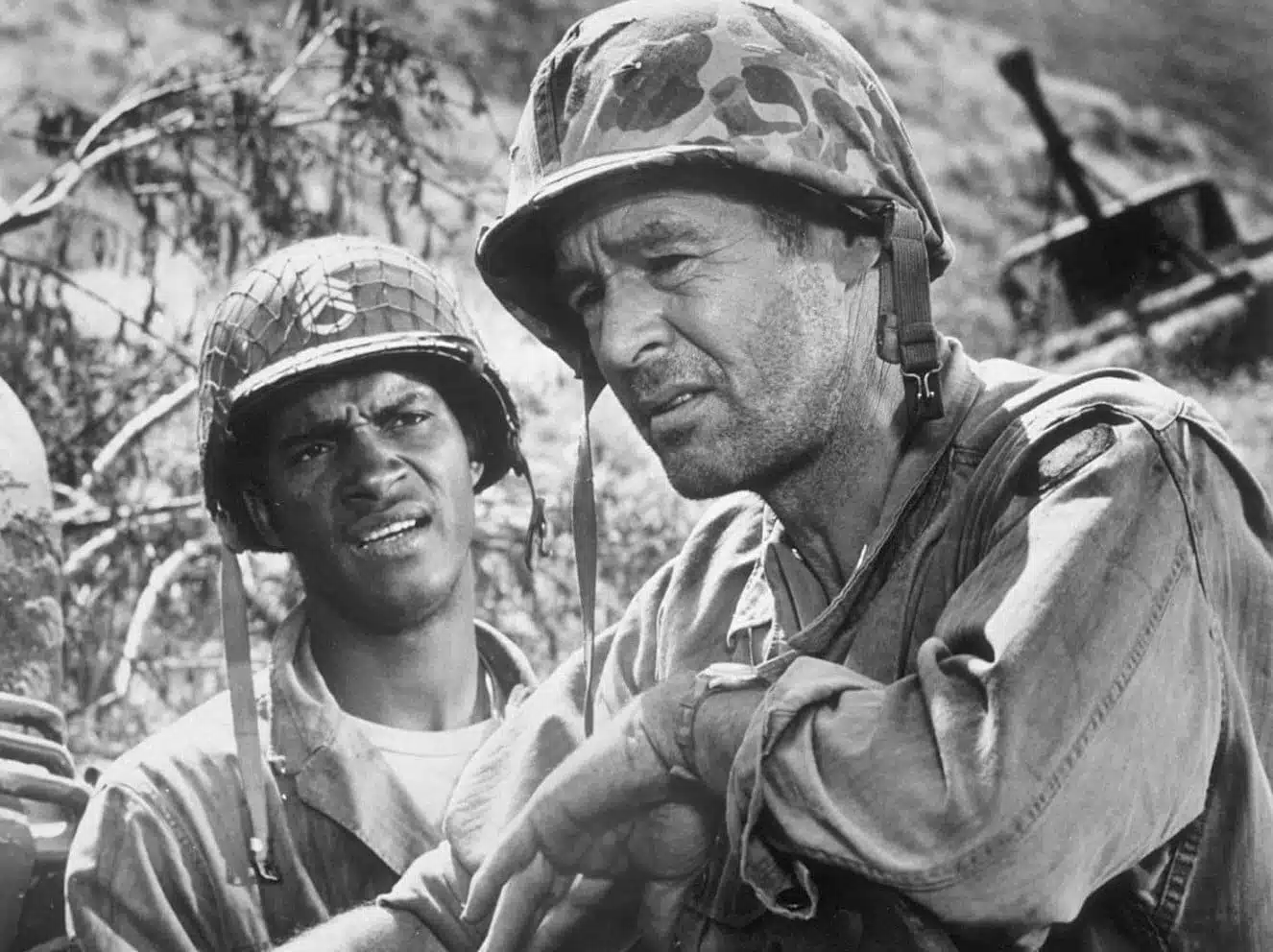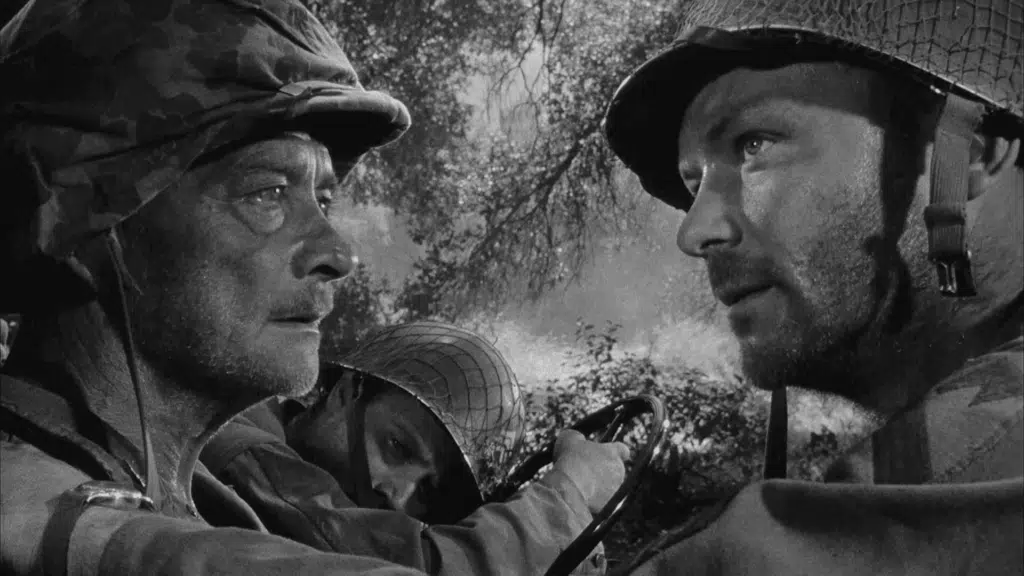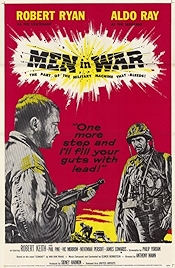A “lost patrol” war movie, 1957’s Men in War shows that director Anthony Mann was as expert in this genre as he had already proved himself to be in film noir (Raw Deal), the western (Winchester ’73) and the epic (Quo Vadis). Made without any buy-in from the US military, it’s a pared-back affair and Mann uses the lack of budget to good effect, relying on key performances from his two leads to deliver the goods.
There are two different types of human endeavour on display in Men in War – the social and the individual. Robert Ryan plays the fiercely egalitarian lieutenant in charge of a platoon trying to make its way back through enemy territory to Hill 465, where the main bulk of the army is. Aldo Ray plays Montana, the cocksure driver of a shell-shocked colonel (Robert Keith) whose jeep Lieutenant Benson (Ryan) forcibly requisitions, to much insubordinate muttering from Montana.
By the time the movie has ended each man has given some ground to the other philosophically, though it appears to be Benson who has budged the most.
As said, no US army involvement, which throws the focus on the men, and forces Mann and his DP Ernest Haller (Gone with the Wind, What Ever Happened to Baby Jane?) to come up with ingenious ways of filling the screen, since action set pieces are out of the question.
Beautiful images is one of the ways they do it. The deep-focus monochrome cinematography is superbly crisp, with framing clearly designed to resemble stills photos. This is a precisely choreographed movie.
Elmer Bernstein’s score is another way. He’s best known for big bold themes for films like The Magnificent Seven, but keeps it intimate here, often tinkling around quietly, purposefully building tension in scenes where men are doing little more than walking along in single file.
The setting is Korea, but the searing sunshine means it could just as easily have been way out west, where the enemy might have been Native Americans rather than the rarely glimpsed Koreans – creeping up by stealth to kill whichever straggler is unlucky enough to have drifted too far to the back of the group.
There’s a scene set in a minefield, which brought to mind the great British war movie Kajaki, which this film resembles also in terms of comradely tone. Montana to one side, this really is a group effort. A touch also of Mel Gibson’s Hacksaw Ridge – the few against the many – though Mann’s far less interested in the gore than Gibson later was. Did any war movie at this time really go in for medical accuracy?
Keith doesn’t get much to do apart from sit in the jeep and silently gibber. One of the lieutenant’s crew, Zwickley (Vic Morrow), is also shell-shocked, which for a film of the era makes this unusually alive to the problem of PTSD. Ryan is his usual brilliant self, as if he weren’t acting at all but was just like that – there is the odd wobble early on but I put that down to the speed at which Mann was working (the whole thing was done in 24 days), with little time for retakes. Ray’s performance is fascinating. Montana isn’t a particularly likeable character but Ray makes no bid for sympathy, except in Montana’s dealings with the colonel he clearly idolises, and even here Ray’s performance pushes into territory that’s borderline pathological.
It’s a great low-budget war movie, the sort of film you could screengrab all day long. The version I watched, by Olive Films (who have since gone under, I believe), looked fantastic until the last 20 minutes, when a blizzard of weird screen artefacts made it look like ash was falling from the sky. No idea what was going on there. Even so, it remained, through the haze, a fabulous looking film, tightly directed and edited, and brilliantly played. When there’s no money that’s when acting really has to step up, as it does here.
Men in War – Watch it/buy it at Amazon
I am an Amazon affiliate
© Steve Morrissey 2024


